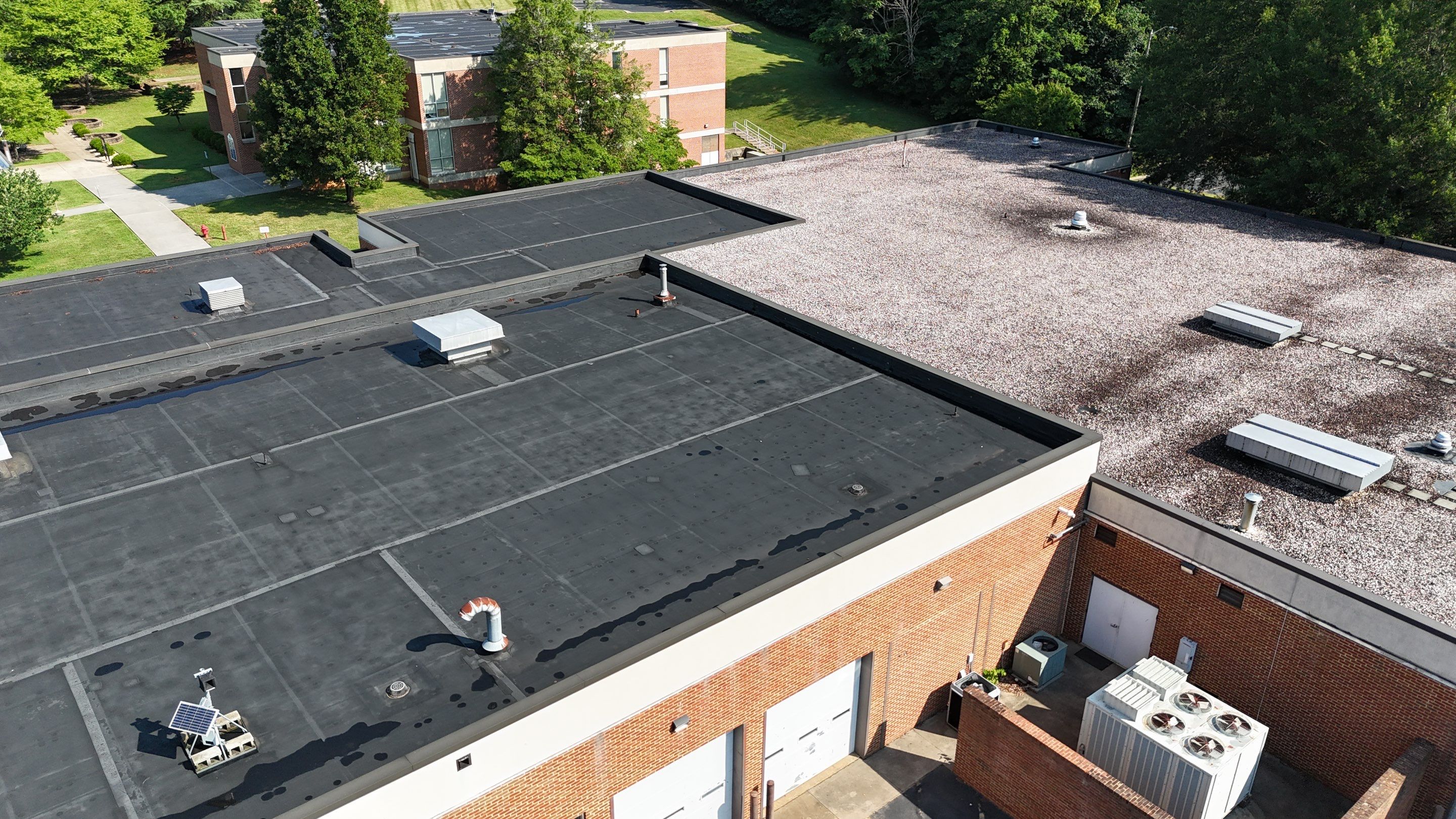12 Reasons Commercial Roof Inspections Fail

Commercial roof inspections are vital for preserving building integrity, minimizing risks, and safeguarding occupant safety. However, poor inspection hygiene can result in missed issues, costly repairs, or worse, structural failure. Let's explore the most common reasons commercial roof inspections fail and how your business can avoid these pitfalls.
1. Reactive, Not Preventive Inspections
A major (yet often overlooked) reason inspections fail is waiting until visible damage emerges before calling a professional. Commercial roofs require proactive, scheduled inspections, not just after leaks develop. Delayed inspections allow minor issues to become major disasters. Experts recommend at least biannual inspections, ideally in spring and fall.
2. Skipping Post-Storm Assessments
You should also schedule a proactive inspection after extreme weather events.
During heavy storms or hail, roofs undergo stress that isn't always obvious. Overlooking a timely inspection in these situations allows subtle damage to escalate. Signs like loose membrane, lifted seams, or hidden cracks require immediate attention after weather events.
3. Poor Installation & Low-Quality Materials
Faulty installation and cheap materials are among the top causes of roof failures. Even high-grade roofs can falter if seams are poorly welded, flashings are misaligned, or membranes are stretched incorrectly. Using inferior-grade flashing or underlayment often leads to premature leaks and system breakdown.
4. Ponding Water & Drainage Failures
Flat or low-slope roofs are prone to water accumulation or "ponding," especially if drains, scuppers, or gutters are obstructed. Water pooling over 48 hours accelerates substrate breakdown, encourages algae and moss growth, and adds structural weight.
5. Membrane Issues: Shrinkage, Blistering, Punctures
Single-ply systems (like PVC, TPO, and EPDM) are susceptible to membrane shrinkage—where seams pull back due to UV exposure—and blistering, which traps air or moisture and leads to punctures. High traffic or falling debris can also cause unnoticed tears in high-wear zones.
6. Flashing Failures
Flashing seals edges around vents, walls, HVAC units, and parapets. If flashing is loose, rusted, or cracked due to thermal cycling or poor installation, water can seep beneath the membrane.
7. Inadequate Inspection Coverage
DIY or incomplete inspections often miss hidden damage. Hiring trained roofing professionals equipped with infrared thermography or moisture scanners increases accuracy. Inspections lacking certain zones—such as not getting on the roof or examining drains—lead to blind spots.
8. Improper Repairs & Quick Fixes
Temporary or incorrect patches—like mismatched materials, poor bonding, or untreated root causes—risk voiding warranties and concealing underlying damage.
9. Clogged Drains, Gutters, and Scuppers
Neglected drainage systems cause backup and increased roof wear. Debris, nests, or corrosion can block gutters or scuppers, leading to ponding and membrane deterioration.
10. Vegetation and Pest Intrusion
Moss, algae, and plant growth trap moisture and degrade membranes, while nesting pests clog drains or create punctures.
11. Weather-Related UV and Aging Wear
Constant sun exposure, wind, and temperature fluctuations deteriorate roofing materials over time, making surface erosion and UV damage inevitable. Older roofs often hide surface cracking or material breakdown.
12. Structural or Substrate Issues
Sometimes the problem lies beneath the surface. Sagging decks, adding rooftop additions, or HVAC installations can stress the substrate and compromise the roof's base layer.
How to Ensure Inspection Success
There are steps you can take during your roofing installation and as a part of your ongoing care to help safeguard your roof, including:
- Schedule Regular Inspections: Always inspect in spring and fall, plus after severe weather. Routine reviews catch problems early.
- Use Qualified Roofing Professionals: Hire certified roofing specialists (like those at Applied Roofing Solutions) who use advanced tools, experienced professionals, and the latest methods for inspection and care.
- Cover All Areas Thoroughly: Evaluate drains, gutters, flashing, traffic zones, membrane seams, and roof edges systematically.
- Document and Track Findings: Photograph damage, note locations, and log maintenance actions for better follow-up and trend tracking.
- Prioritize Quality Roofing Repairs: Address issues immediately using correct materials and techniques. Avoid patch-and-run approaches.
- Clean and Maintain Drainage Systems: Keep drains, scuppers, and gutters clear year-round to ensure proper water flow.
- Manage Vegetation and Pests: Schedule periodic cleanings and pest control to prevent organic buildup and damage.
Commercial Roof Inspections from Applied Roofing Solutions
Applied Roofing Solutions proudly provides industry-leading inspections and preventative maintenance to businesses throughout the NC Piedmont region, including Reidsville, Mayodan, Burlington, Madison, Mebane, Eden, Graham, and beyond. We also extend our commercial roofing services to Southwest Virginia, including Danville, Martinsville, Collinsville, Stuart, Stanleytown, and Patrick Springs.
We invite you to explore our portfolio or contact our commercial roofing professionals to get started today!




